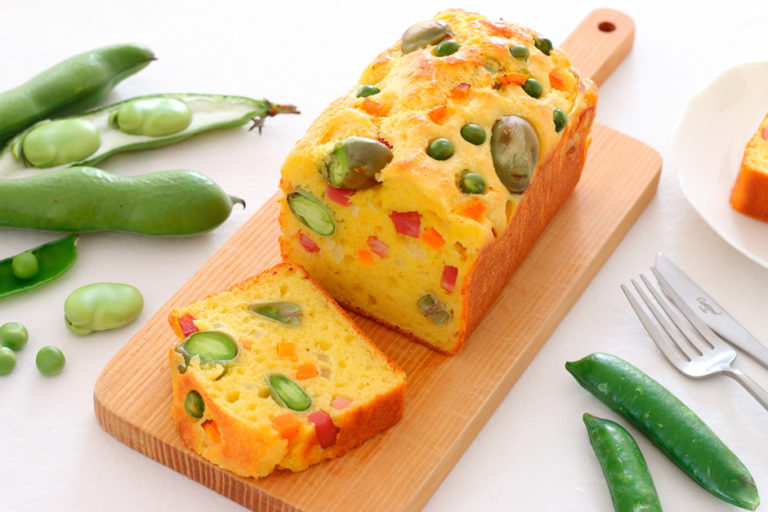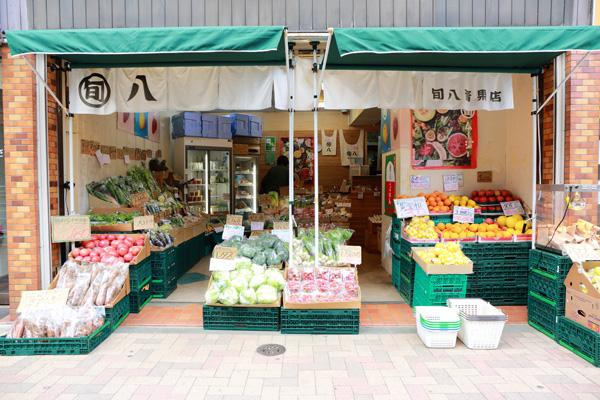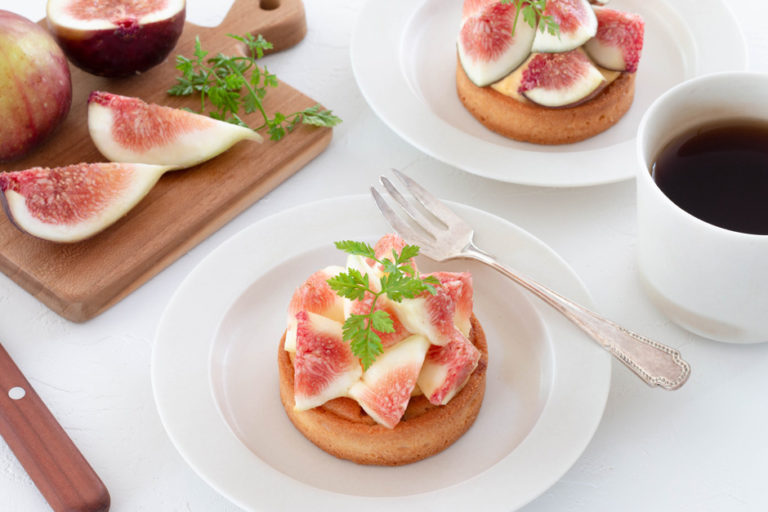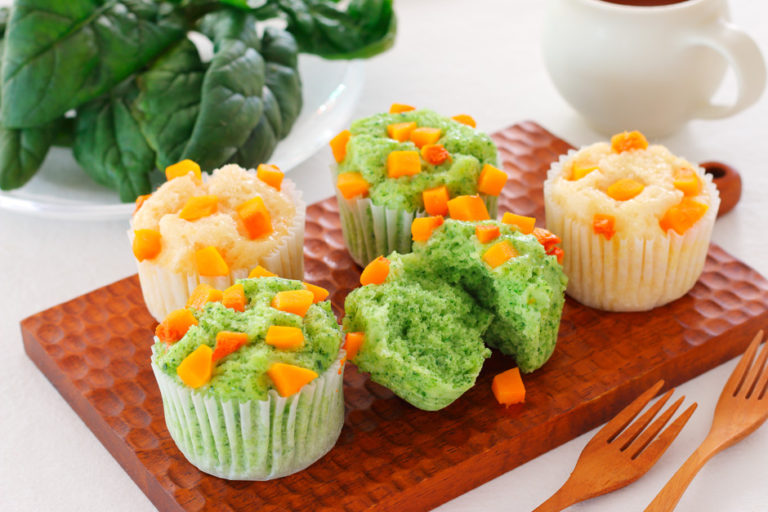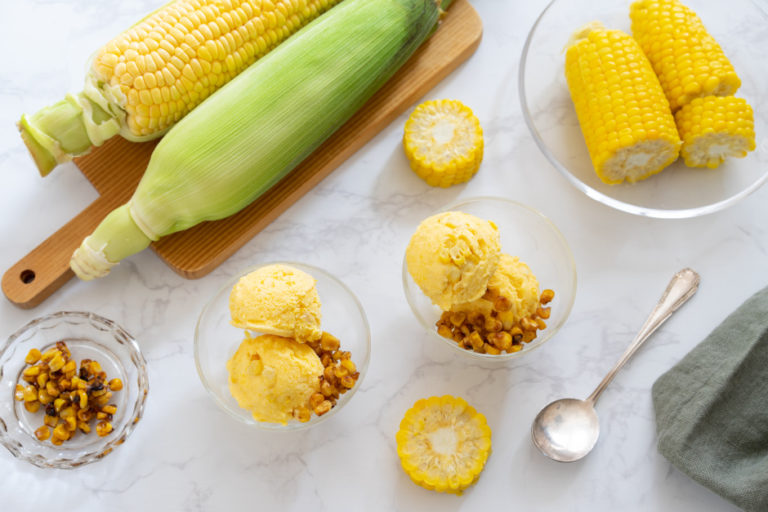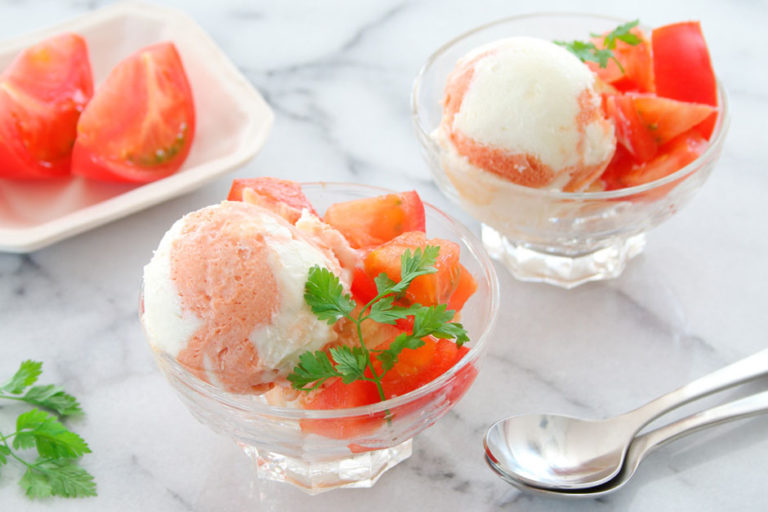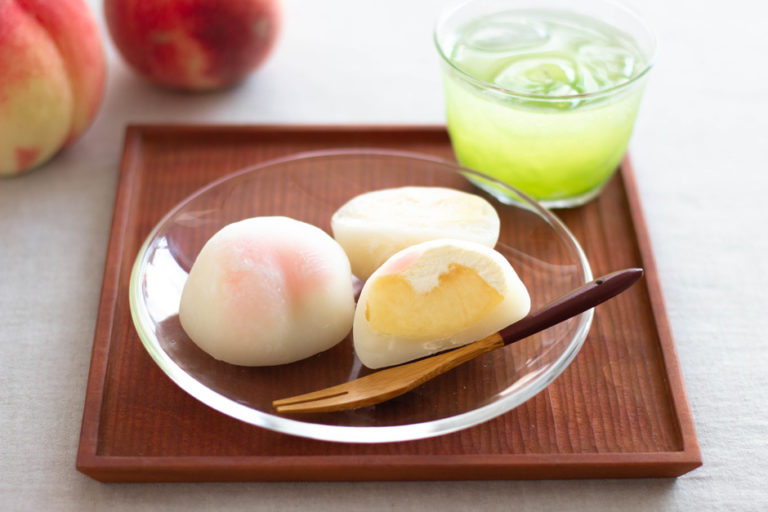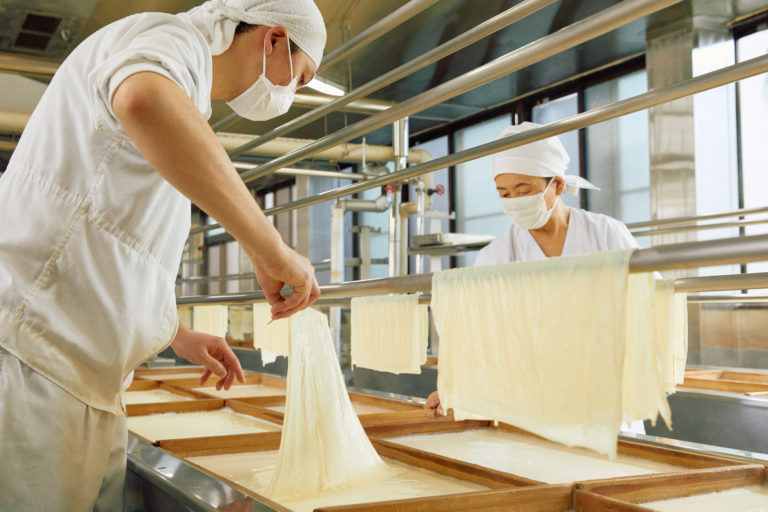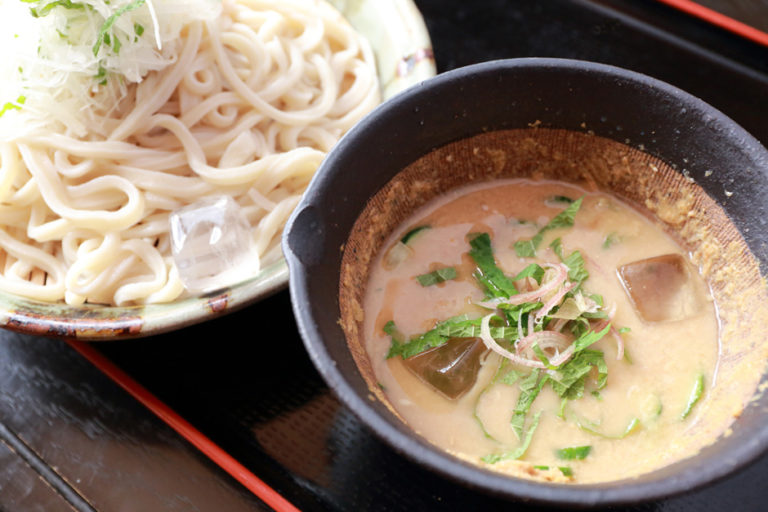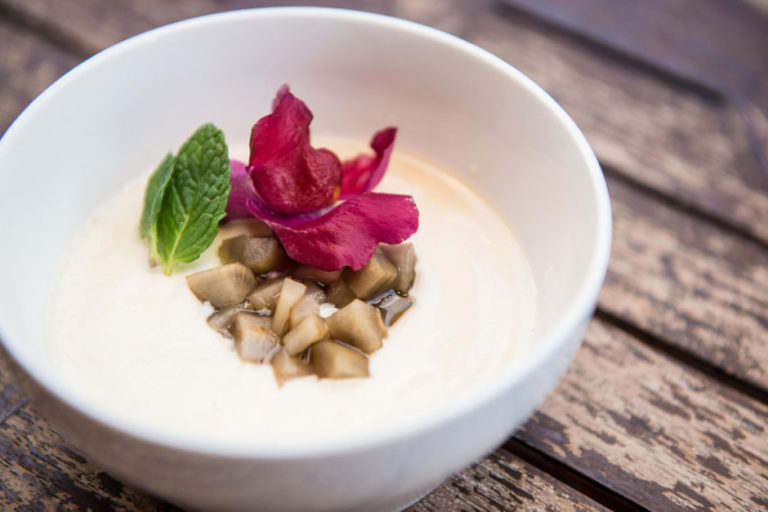The taste of peak season: seasonal confectionery with broad beans
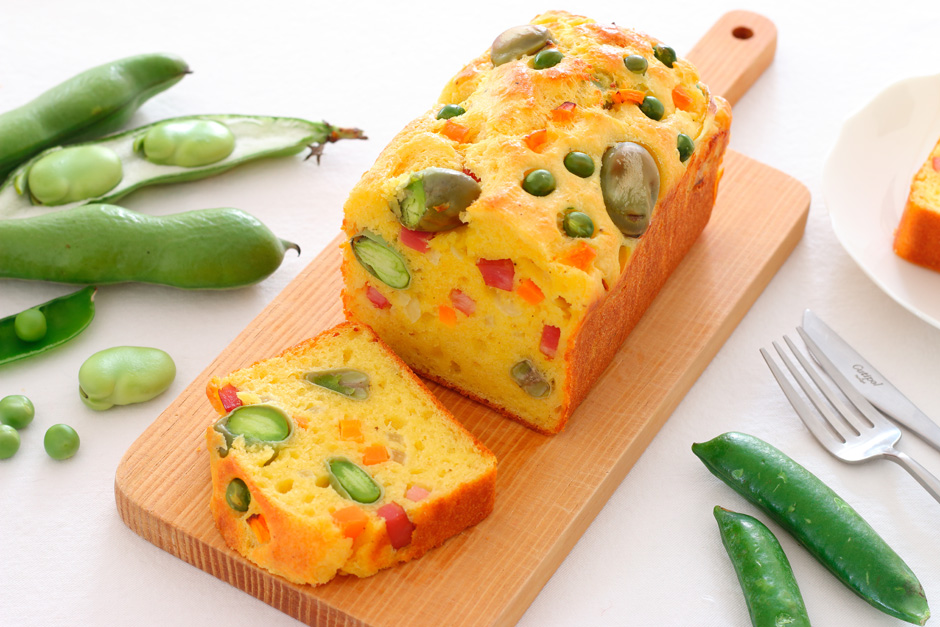
This time, we will tell you broad beans’ best season, how to choose good ones, and the recipe of a highly nutritious “spring vegetable cake sale” with broad beans.
The beans rise toward the sky, basked in the sun
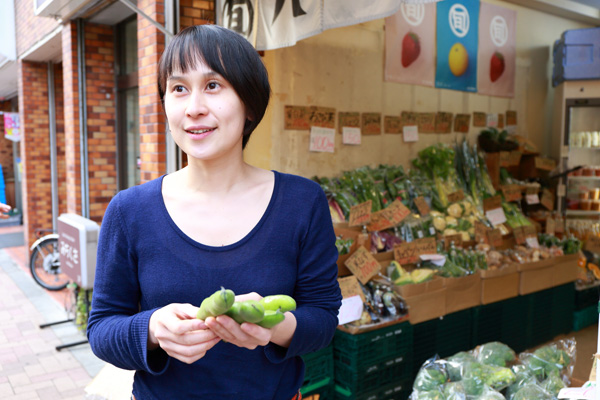
We visited the Gotanda branch of Shunpachi Seikaten, a grocery store chain of fresh, tasty and rea-sonably priced vegetables with stores mainly in Tokyo, to ask how to choose good broad beans and the best ways to enjoy them.
“The name soramame (Japanese name for broad beans) is said to have come from the fact that the pods grow toward the sky (sora in Japanese means “sky,” and mame means “beans”). They are cute and tasty, and are my favorite vegetable,” says Takuno Matsune, a buyer for Shunpachi. She showed us a photograph of broad beans taken in a field. Sure enough, broad bean pods are vigorously stemming out upward from the trees planted like hedges across the field.

Most spring beans such as broad beans and mangetout are shipped from Kagoshima, starting around December and January. After that, their peak location moves northward to Ehime and Ibaraki Pre-fectures, just like the forefront of cherry trees. Eventually, the broad beans stretch to Aomori.
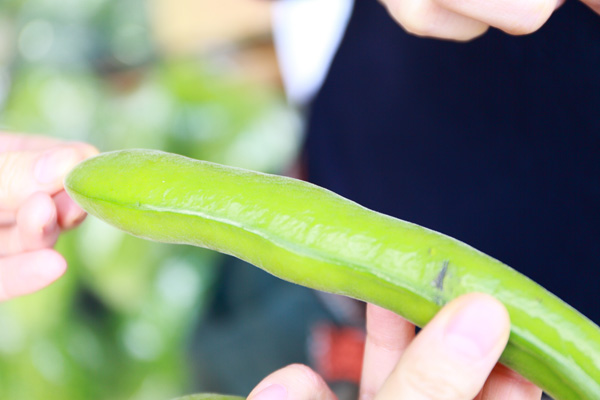
We also asked Matsune about how to choose tasty broad beans. “First, if the pods have fluff, they are fresh. If they are deep green, fat, and you can tell the shape of the beans inside, they will be tasty,” says Matsune.
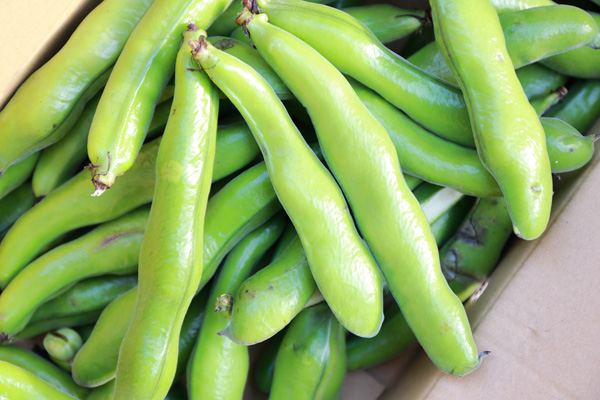
According to Matsune, the number of beans inside does not affect the taste. She says we could choose smaller pods with fewer beans because that way we could enjoy them more often, as the smaller ones would be more affordable.
The unknown wonders of broad beans
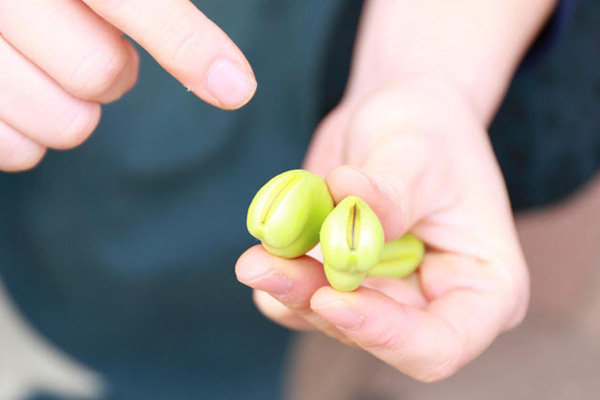
How can we make broad beans tastier than usual? First, surprisingly few people know that the thin skin on the beans is edible. According to Matsune, the young beans with green joints with the pods can be eaten whole with the thin skin. They are moist. Completely ripe beans with brown joints are better eaten without the skin because the skin would be hard. Apparently, these older beans are fluffy and have a stronger taste.
“Their peak season is only two to three months, but within that short span of time, they change. That’s what’s interesting about broad beans. I would encourage you to enjoy the changing taste and texture.”
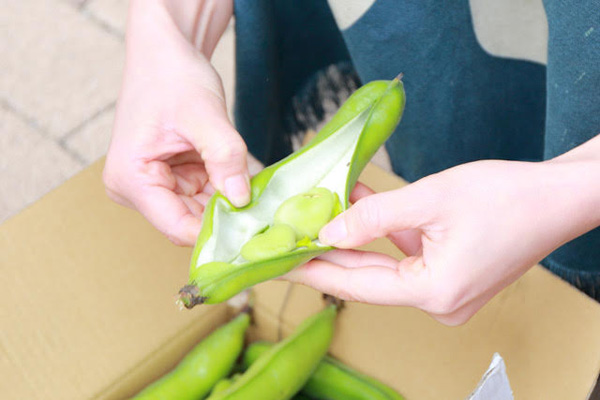
Matsune recommends grilling whole broad beans. If the whole pod is grilled in a toaster or oven until it turns black, the beans inside get thoroughly heated. Or, to boil them with salt, an incision made in the joints between the beans and pods will help the salt to go into the beans and make them tasty. The other thing many of us don’t know is that the white fluff inside the pods is also edible, says Matsune.
“The fluff is actually nutritious. If the beans are young with green joints, you should scoop the beans with a spoon with the fluff and eat them together.”
Baking a cake with various spring vegetables
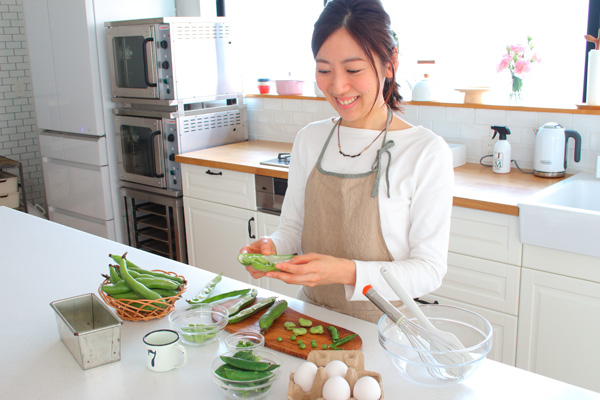
We asked confectionery researcher marimo to devise a recipe that brings out the character of broad beans. This time, she came up with cake salé with spring vegetables, with balanced taste and nutri-tion.
In French, cake salé means savory cake, baked without sugar, but with vegetables or cheese. Be-cause it is not sweet it tastes more like deli bread than cake. Usually it is baked in a tube pan like cake.
“It makes a great food on-the-go this time of the year when the weather is mild, because it is still tasty even when it is cold,” says marimo.
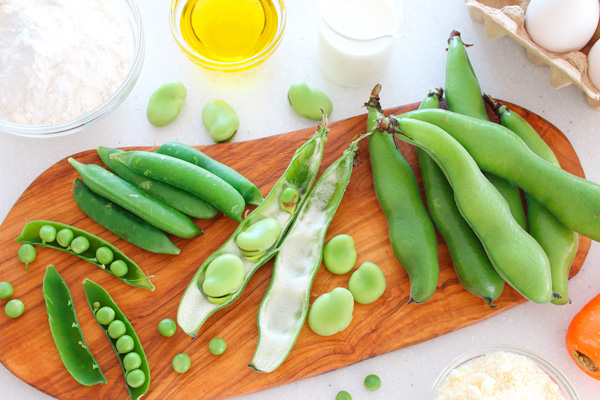
As a cross-section of the cake sale shows various ingredients like cake, it is best to use colorful in-gredients. That way, it will look good, and be nutritionally balanced.
This time marimo produced a recipe for cake sale with spring vegetables, using plenty of spring vegetables including broad beans, fresh carrots, fresh onions and peas.
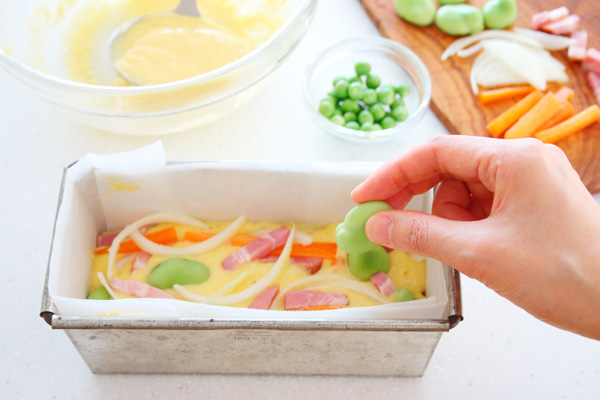
For oven-baked confectionery it is best to add beans like broad beans and peas to the dough without cooking them first. Other vegetables like carrots and onions can also be used without cooking them because they get thoroughly heated in the oven.
The beans tend to lose flavor when they come in contact with air. It is best to buy them whole and take them out of the pods just before cooking.
“There is a lot of Parmesan cheese in it and that makes it slightly salty, so you can use any ingredi-ents. Broad beans will be fluffy and sweet, peas will smell nice and fresh, perfect for spring. You may think salty cake? But, it is more like a deli item that is easier to prepare than quiche. I hope you will try it,” says marimo.
Cake salé with spring vegetables with many colorful, seasonal vegetables. Why not try it in the up-coming picnic season?
Broad beans
Source:Takuno Matsune, buyer, Shunpachi Seikaten grocery store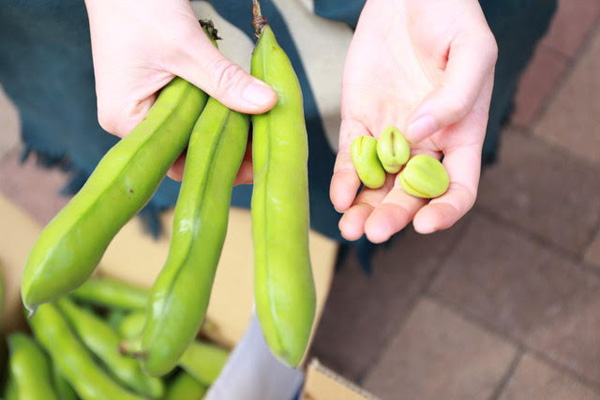
Peak Season
February to June
Tips
There is fluff on the pod.
The pod is deep green, fat,
and the shape of the beans inside is visible
How to enjoy them
Grill them whole in the pod in a toaster or oven until totally black

